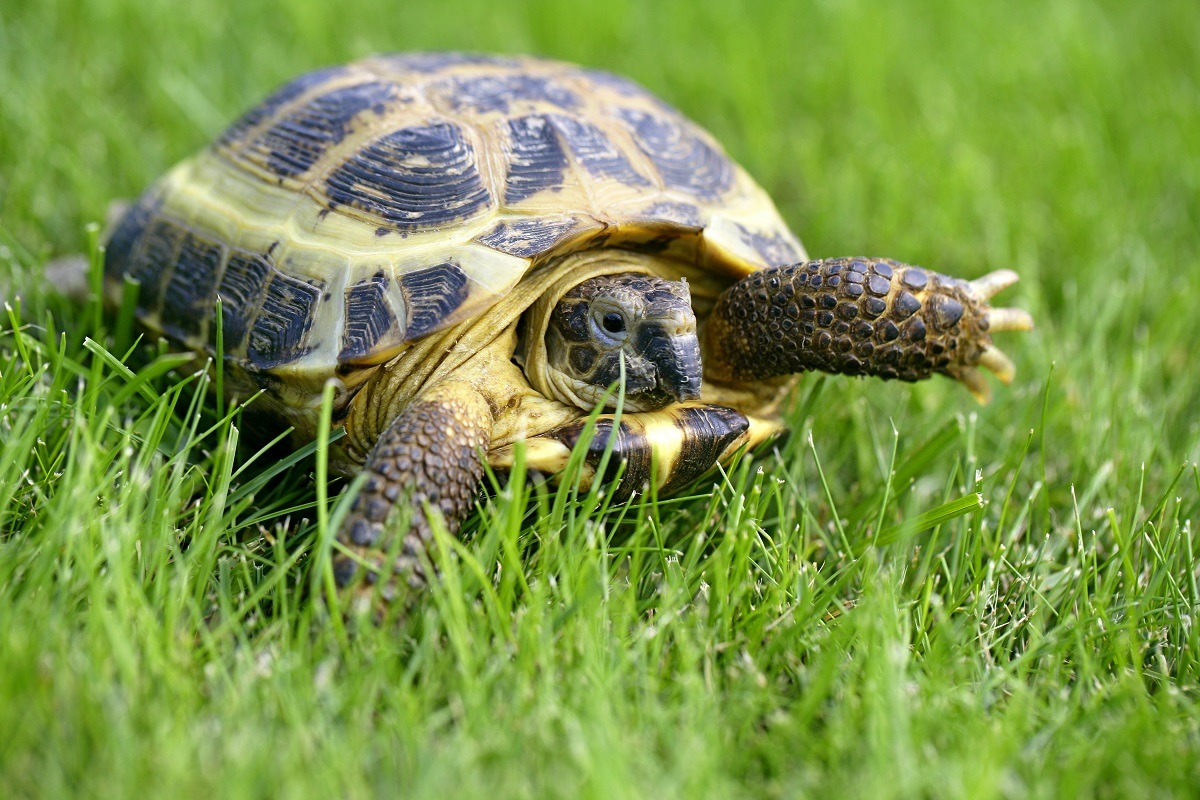
Russian tortoises, also known as Horsfield’s tortoises, are fascinating creatures that captivate the hearts of reptile enthusiasts all over the world. These small and hardy tortoises are native to the arid regions of Central Asia, where they have adapted to survive in harsh desert conditions. With their unique characteristics and endearing personalities, Russian tortoises have become popular pets for both beginners and experienced reptile keepers.
In this article, we will explore 20 fun facts about Russian tortoises that will not only deepen your appreciation for these remarkable creatures but also increase your knowledge about their behavior, habitat, and special abilities.
Key Takeaways:
- Russian Tortoises are fascinating reptiles with a lifespan of up to 50 years, making them long-term companions for reptile enthusiasts. They are skilled diggers, herbivores, and excellent swimmers, offering endless entertainment and educational value.
- These docile tortoises are native to Central Asia and have a unique shell structure that provides protection against predators. They communicate through vocalizations, have a keen sense of smell, and are listed as a near-threatened species due to habitat destruction and illegal pet trade.
Russian Tortoises have a lifespan of up to 50 years.
These amazing tortoises can live for several decades, making them long-term companions for dedicated reptile enthusiasts.
They are native to Central Asia.
Found in regions like Russia, Iran, Afghanistan, and Pakistan, Russian Tortoises are adapted to thrive in arid environments.
Their average size ranges from 6 to 10 inches.
With a compact but sturdy build, these tortoises are relatively small, making them popular choices for pet owners with limited space.
Russian Tortoises are herbivores.
These reptiles have a diet consisting mainly of grass, weeds, and leafy greens, which are essential for their growth and overall well-being.
They are excellent diggers.
With strong forelimbs and sharp claws, Russian Tortoises are skilled at burrowing into the ground to create nests or find shelter.
Russian Tortoises are known for their resilience.
These reptiles can adapt to various environmental conditions, including temperature fluctuations and limited food availability.
They have a unique shell structure.
Their domed shells provide protection against predators, and the growth rings on their shells can indicate their age.
Russian Tortoises are fairly docile.
While each tortoise has its own personality, they are generally calm and tolerant of human interaction, making them great pets for beginners.
They hibernate during the winter months.
Russian Tortoises undergo a period of dormancy during colder months, where they retreat to burrows and conserve energy.
These tortoises have a keen sense of smell.
They use their sensitive noses to locate food sources and identify potential mates.
Russian Tortoises can withstand high temperatures.
Thanks to their natural habitat, they are adapted to endure hot climates, although it’s crucial to provide shade and water for proper thermoregulation.
They are solitary animals.
Russian Tortoises prefer to live alone and may display aggression towards other tortoises if kept together.
They are expert climbers.
Despite their slow-moving nature, Russian Tortoises can climb rocks and low vegetation with their powerful limbs.
These tortoises are known for their longevity.
With proper care, Russian Tortoises can live well into their golden years, becoming cherished family pets.
They communicate through various vocalizations.
Russian Tortoises use hissing sounds and other vocal cues to communicate with each other.
These tortoises are excellent swimmers.
Though they may not spend much time in the water, Russian Tortoises can swim when necessary, crossing small bodies of water.
They have a unique defense mechanism.
If threatened, Russian Tortoises will often retreat into their shells, tucking their head, legs, and tail inside for protection.
These tortoises require a spacious enclosure.
Providing them with a large and secure habitat allows them to exhibit natural behaviors and have room to roam.
Russian Tortoises are listed as a near-threatened species.
Habitat destruction and illegal pet trade have contributed to the decline of their population in the wild.
They are fascinating creatures to observe.
Whether you admire them in their natural habitat or keep them as pets, Russian Tortoises offer endless entertainment and educational value.
So, there you have it – 20 Russian Tortoise fun facts that highlight the intriguing nature of these remarkable reptiles. Whether you’re a reptile enthusiast or simply curious about the world of turtles, the Russian Tortoise is undoubtedly a captivating species worth exploring.
Conclusion
Russian tortoises are fascinating creatures with unique characteristics that make them popular pets. From their small size and long lifespan to their love of burrowing and ability to hibernate, these tortoises have plenty of interesting traits to discover. Whether you’re considering getting a Russian tortoise as a pet or simply curious about these amazing animals, learning more about them is a rewarding experience. With proper care and attention, they can provide companionship and joy for many years to come.
FAQs
Q: How long do Russian tortoises live?
A: Russian tortoises have a relatively long lifespan of approximately 40 to 60 years when cared for properly.
Q: What do Russian tortoises eat?
A: Russian tortoises are herbivores and primarily eat a diet consisting of various leafy greens, vegetables, and grasses.
Q: Can Russian tortoises live together?
A: While Russian tortoises can coexist peacefully, it’s best to keep them separated to avoid potential conflicts and stress.
Q: Do Russian tortoises hibernate?
A: Yes, Russian tortoises are known to hibernate during the winter months, typically burrowing underground to protect themselves from the cold.
Q: How big do Russian tortoises get?
A: Russian tortoises are small in size, typically reaching a maximum length of 8 to 10 inches and weighing around 1 to 2 pounds.
Was this page helpful?
Our commitment to delivering trustworthy and engaging content is at the heart of what we do. Each fact on our site is contributed by real users like you, bringing a wealth of diverse insights and information. To ensure the highest standards of accuracy and reliability, our dedicated editors meticulously review each submission. This process guarantees that the facts we share are not only fascinating but also credible. Trust in our commitment to quality and authenticity as you explore and learn with us.


